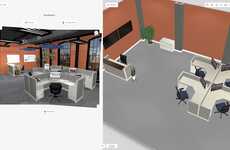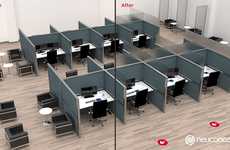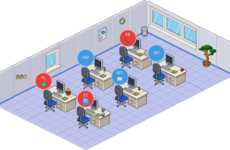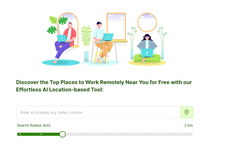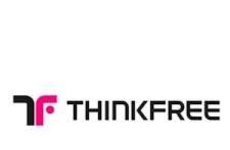
This Infographics Predicts the Death of the Office
Vasiliki Marapas — November 8, 2014 — Pop Culture
References: intuit
The Death of the Office Infographic explores how technology will influence our future work spaces. It asks the question, "What does the workplace look like in a world where physical location has become unimportant, and where people are able to connect seamlessly from almost anywhere on the planet?"
To start, the infographic examines the rise of the telecommuter: a whopping 24% of the American workforce works from home today, compared to 4.4% in 2012. This trend is occurring in other countries as well; for example, France and the UK. People aged 36-45 are most likely to work from home.
Statistics suggest that people can be anywhere from 11-20% more productive when working on creative tasks at home, a statistic that is supported by the majority of employers (90%), who believe that employee flexibility leads to greater results.
To start, the infographic examines the rise of the telecommuter: a whopping 24% of the American workforce works from home today, compared to 4.4% in 2012. This trend is occurring in other countries as well; for example, France and the UK. People aged 36-45 are most likely to work from home.
Statistics suggest that people can be anywhere from 11-20% more productive when working on creative tasks at home, a statistic that is supported by the majority of employers (90%), who believe that employee flexibility leads to greater results.
Trend Themes
1. Rise of Remote Work - The rise of remote work is disrupting the traditional office setup and creating opportunities for businesses to embrace flexible work arrangements.
2. Increased Productivity - The statistic that people can be 11-20% more productive when working on creative tasks at home presents an opportunity for businesses to explore alternative work environments and leverage technology to enhance productivity.
3. Importance of Employee Flexibility - The importance of employee flexibility in achieving better results is leading businesses to rethink traditional work structures and find innovative ways to enable remote work.
Industry Implications
1. Technology - Technology plays a crucial role in enabling remote work and creating tools and platforms to support seamless connectivity and collaboration from anywhere.
2. Workspace Solutions - The changing dynamics of the workplace call for innovative workspace solutions that accommodate remote work and provide a productive environment for employees.
3. HR and Talent Management - With the rise of remote work, HR and talent management professionals need to adapt their strategies to attract, engage, and retain a remote workforce and foster a culture of flexibility and autonomy.
5.6
Score
Popularity
Activity
Freshness


